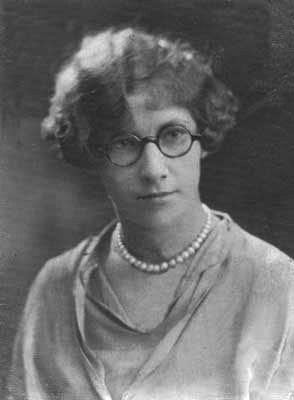
The art genre I am highlighting today gets very mixed responses from people One either loves or hates the depictions. On one hand, the depictions are looked upon as delightful portraits of innocence and on the other they are viewed as mawkish, fluffy, and oversentimental. As always, the choice is yours, for, as we know, beauty is in the eye of the beholder. Let me introduce you to a foremost exponent of child portraiture and one whose style has often been compared to the Pre-Raphaelite painters or the French artist William-Adolphe Bouguereau Today my featured artist is the French-born English Victorian nineteenth century painter Sophie Gengembre Anderson.
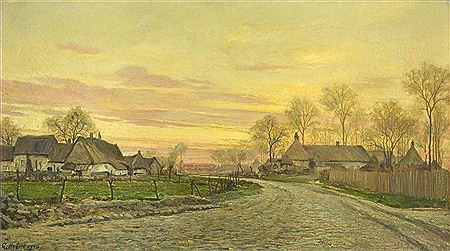
Sophie was born in Paris in 1823. She was the first-born child of Charles Antoine Colomb Gengembre, a French architect, engineer and landscape artist and his English wife. Gengembre’s career as an architect began at the age of nineteen and he worked primarily on municipal commissions, such as the Mint of the City of Cassel, which he designed and helped to build. In 1814, aged twenty-four, he won second place in the Architecture category of the Grand Prix de Rom. In 1830, during the three-day July Revolution (révolution de Juillet), which saw the overthrow of King Charles X, Gengembre suffered a bayonet wound to his leg. This harrowing event occurred on the same day his son and second child, Philip, was born. Following this incident, he decided to take his family out of France and they went to live in London where he worked as an architect for the French Utopian Socialist, Charles Fourier. Gengembre and his family did eventually return to his homeland and they went to live in a small town in a remote part of France with his family, but because of his participation in the earlier revolution he was always under threat.
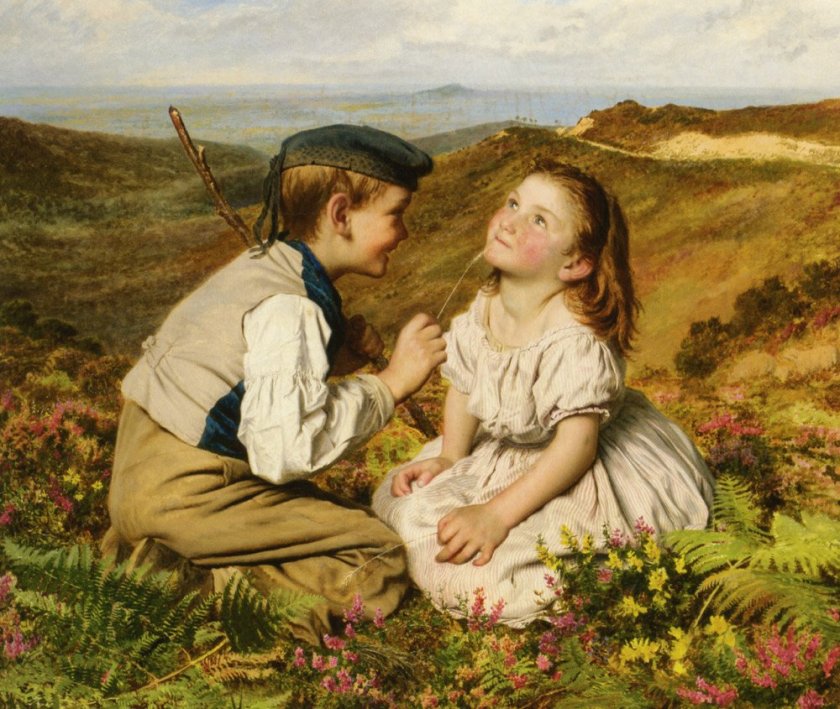
When she was seventeen years of age, Sophie Gengembre Anderson received some art lessons from an itinerant portrait artist who had visited the small town where she lived. In 1843, whilst staying with friends in Paris, she received some portraiture and figurative training from Baron Charles Auguste Steuben, the German-born French Romantic painter and lithographer, but mostly, she was self-taught. In 1845 her brother Henry was born.
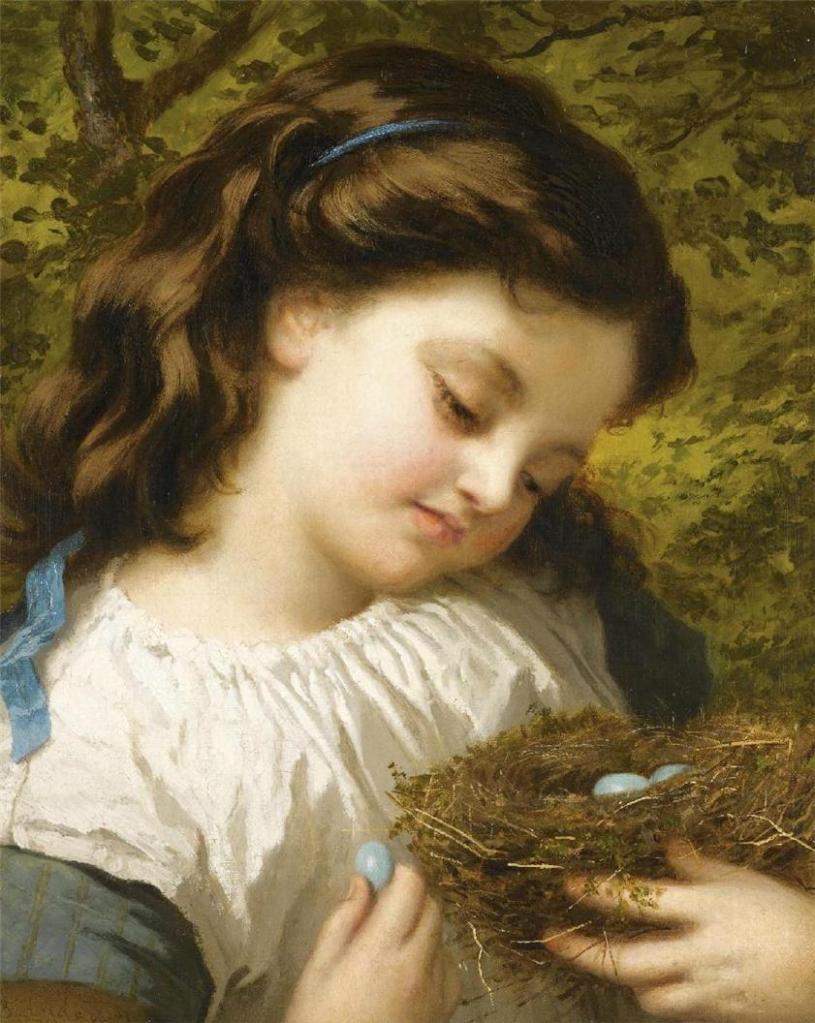
Three years later, in 1848 another French Revolution broke out – this one, sometimes known as the February Revolution, was one of a wave of revolutions that were happening in Europe at the time and one which ended the Orleans monarchy and led to the creation of the French Second Republic. Fearing for his life and that of his family, the Gengembre family left France and went to live in Cincinnati. Once settled in America Sophie began to earn money by taking on portraiture commissions from well-to-do families around the neighbourhood. Her artistic talent was soon recognised and in 1849 she began to exhibit her work at the Western Art Union Gallery in Cincinnati. It was while collaborating on an album of portraits of the Protestant Episcopal Bishops of the United States that she met the British artist Walter Anderson.
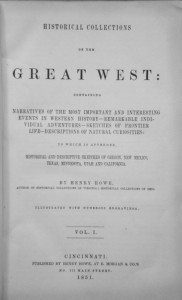
Walter Anderson was an English painter, lithographer, and engraver. He was a painter of still lifes, landscapes and genre work and had moved to Cincinnati in 1849 where he met Sophie. She and Walter collaborated on many illustrative commissions including her work on illustrations for Henry Howe’s Historical Collections of the Great West, which was published in 1851. She also worked for Louis Prang and Company which specialised in chromolithography, a technique for making multi-colour prints.
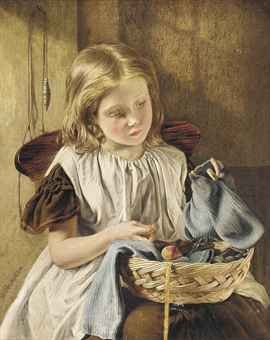
Sophie and her family left Cincinnati in 1853, closely followed by Walter Anderson who was by this time engaged to Sophie, and the couple settled down in Manchester, a neighbourhood of Allegheny just north of Pittsburgh. In 1854 Sophie and Walter travelled to England where they married. Whilst there she entered paintings into the exhibitions held by the Society of British Artists and later exhibitions at the Royal Academy of Arts.
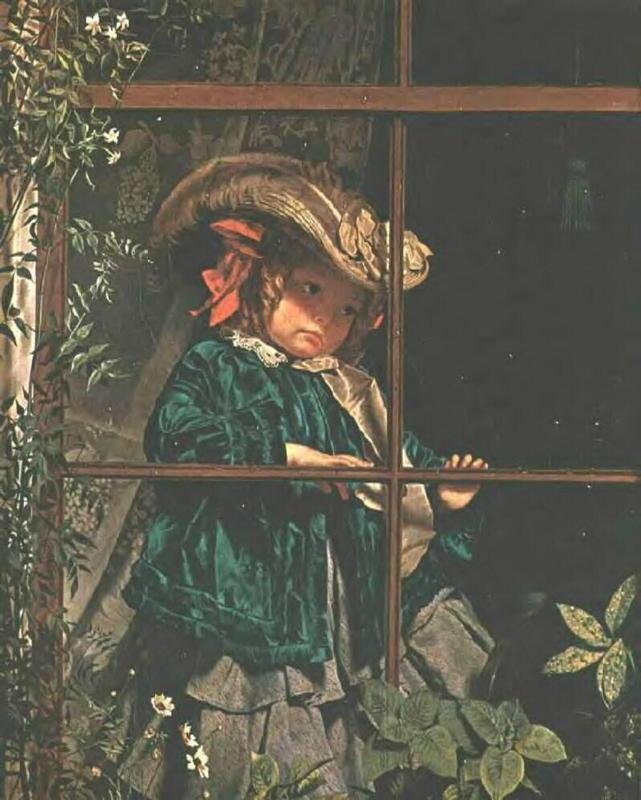
In 1856 Sophie produced one of her best loved and most famous works, entitled No Walk Today. The work is testament to Sophie’s fine attention to detail. It is almost photographic in quality. One cannot help but be mesmerised by the amount of work she has put into the detail of the lace curtains we see behind the child. Look at the child. By the way she is dressed, she appears to be part of a wealthy family. She wears her outdoor clothes as a prelude to setting off on a walk but we can see by her facial expression, all is not well ! The inclement weather has curtailed any thoughts of going out of the house and the sullen and disappointed expression on her face perfectly sums up feelings.
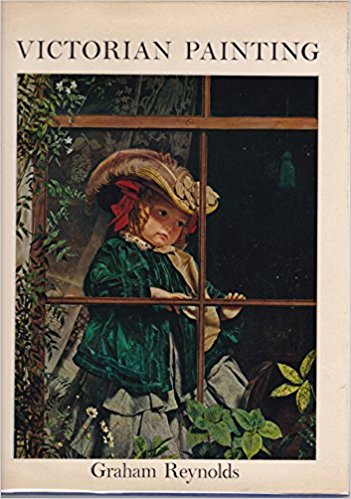
The painting was reproduced on the cover of Graham Reynolds’s important 1966 book Victorian Painting. The work was bought in 1926 by David Montagu Douglas Scott, a grandson of the 5th Duke of Buccleuch for fourteen guineas. It was an astute buy as this painting genre at the time had fallen out of favour, hence the low purchase price. In November 2008, the painting was sold at Sotheby’s, London for a world record price, for her work, of more than £1 million pounds.
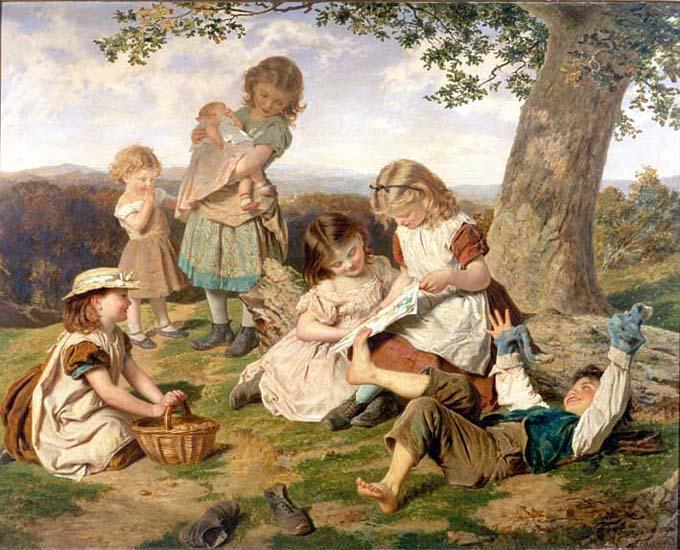
Her painting Children’s Story Book was one of her works which depicts the joy of everyday life. In this work, we see a group of country children who are reading from a story book. By the way they are dressed and by the holes in the boy’s socks which he pokes his fingers through, we must deduce that they are poor. Despite such poverty we are left in no doubt that they are very happy. The boy fools around craving attention whilst the four female children are reading or listening to a story. I suppose this could be seen as a very stereotypical view ! The tallest and presumably the oldest of the girls is carrying a baby. This type of depiction was popular at the time. For many it was the stereotypical idyllic image of the English countryside, the innocence of childhood and the maintaining of old-fashioned standards. Such utopian ideas were clung to by many in the face of the onset of rapid industrialisation.
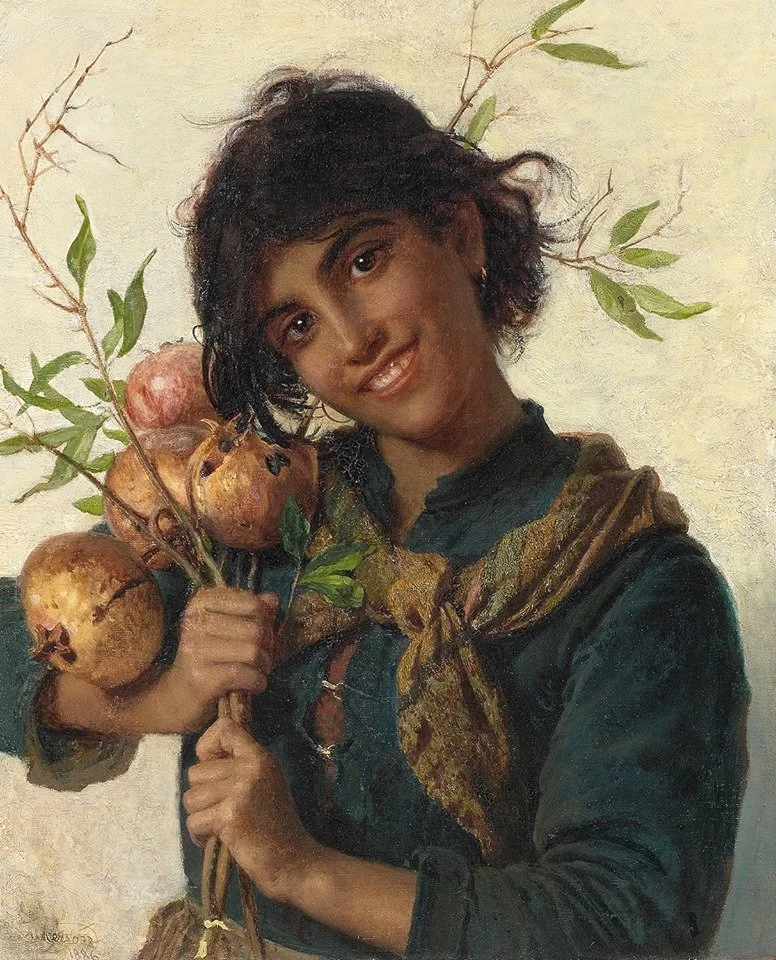
The couple returned to Pennsylvania in 1858 for a long visit with Sophie’s family, during which time she exhibited at the Pittsburgh Artist’s Association in 1859 and 1860, and it was in that latter year that she and Walter both had work exhibited at the National Academy of Design. The couple returned to London in 1863 where they remained until 1871.
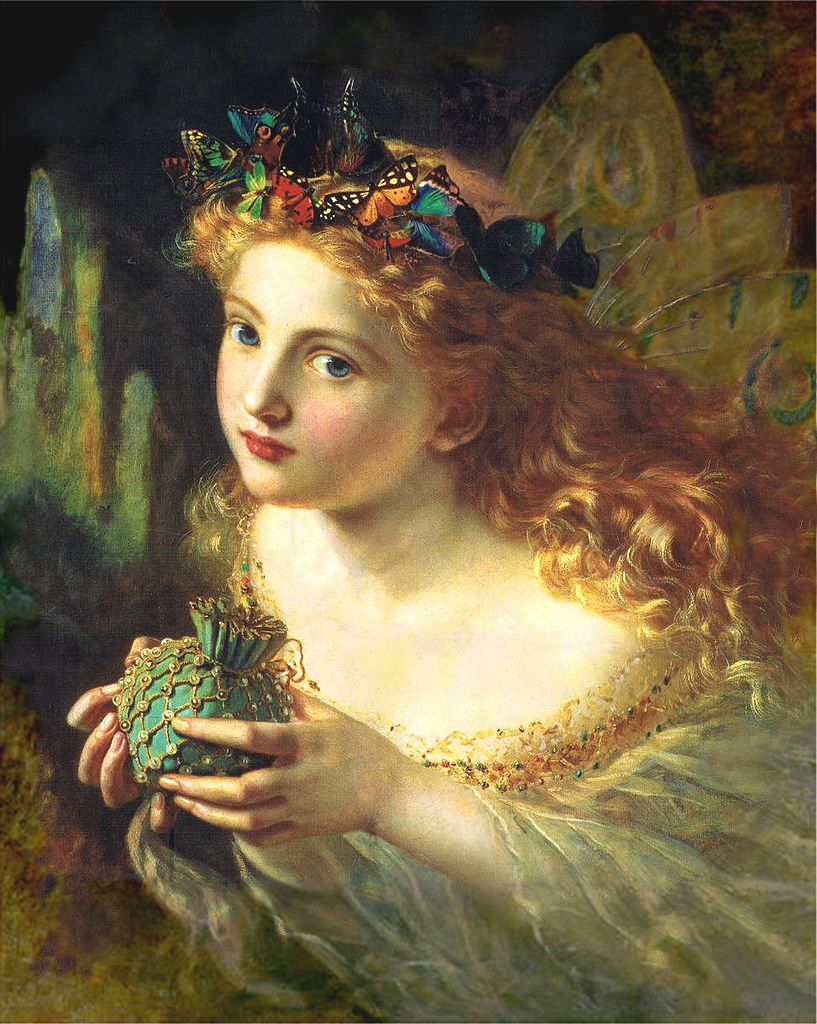
In 1869 Sophie Anderson completed a painting depicting a fairy and the title of the work, Take the Fair Face of Woman, and Gently Suspending, With Butterflies, Flowers, and Jewels Attending, Thus Your Fairy is Made of Most Beautiful Things, which some believe was based on a passage from a poem by Charles Ede.
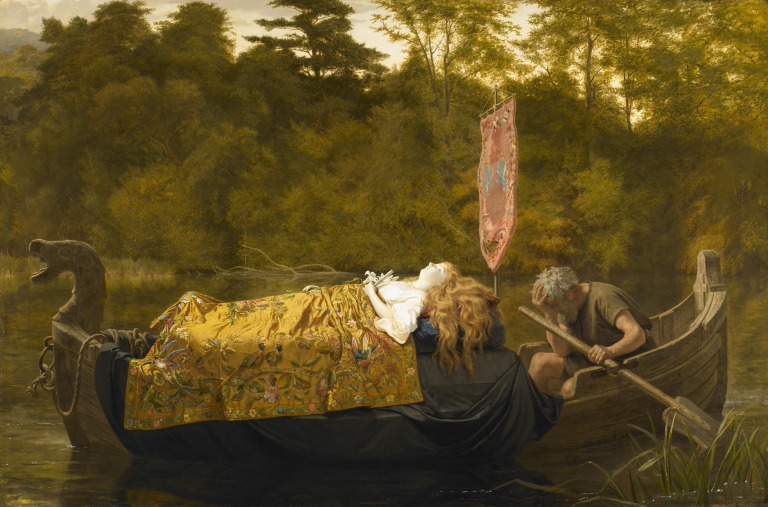
In 1870, Sophie completed a work entitled Elaine. The work is based on Tennyson’s cycle of twelve narrative poems by the English poet Alfred, Lord Tennyson, Idylls of the King which retells the legend of King Arthur, his knights, his love for Guinevere, her tragic betrayal of him, and the rise and fall of Arthur’s kingdom. In this depiction, it is all about Elaine who fell in love with Sir Lancelot but, sadly for her, he abandoned her in favour of Queen Guinevere. Elaine died of unrequited love and here we see her faithful dumb servant rowing her to King Arthur’s palace at Camelot. In her hand she clutches a lily, representing purity, and a letter expressing her undying love for Lancelot. It is a large painting, measuring 158 x 241cms (62” x 95”) and it was very unusual in the late nineteenth century for female artists to paint such grand history paintings. The Liverpool City Council selected this painting for purchase at the first of their Autumn Exhibition.
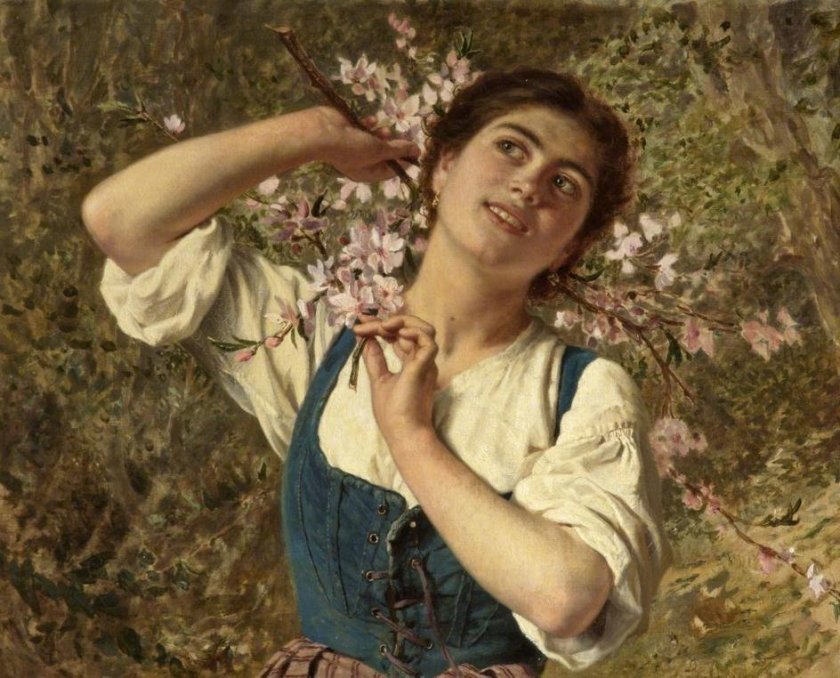
Because of Sophie’s health problems he and her husband decided to move to a warmer climate and in 1871 relocated to Capri and lived in Villa Castello, a beautiful house with an extensive garden which was an ideal setting for entertaining fellow artists. Capri was a popular location for artists and at some time was home to the likes of Frederic Leighton, John Singer Sargent, and the French artists, Edouard Alexandre Sain, and Jean Benner.
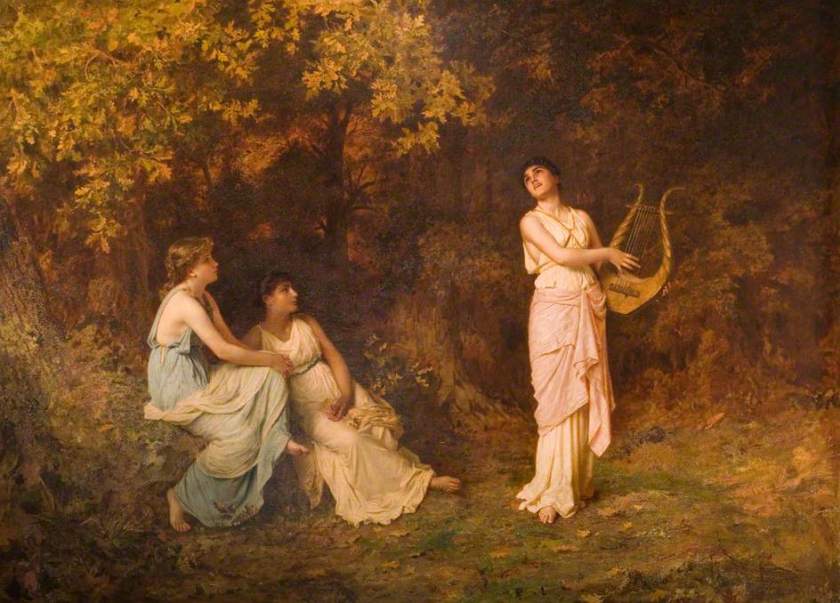
In 1881, whilst on Capri, she completed a work entitled The Song. In this painting, we see three young women dressed in roman costume in a wooded clearing. All the women are dressed in Greco-Roman style clothes. One is playing a lyre and singing while the others recline and listen attentively. This scene could have a possible allegorical tone to it or may simply be a scene from every-day Roman life. Whichever is the case, this type of depiction was very popular in the nineteenth century especially with the middle classes who liked to show off their knowledge of Roman and Greek history. There is also a possibility that this depiction had moral connotations as during Victorian times the inclusion of the lyre or harp came to symbolise a faithful woman. The painting was exhibited the Liverpool Autumn Exhibition in 1881.
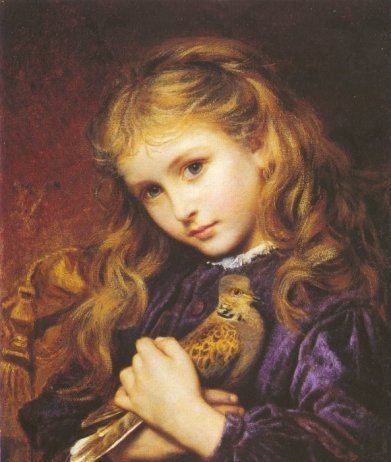
Walter and Sophie Anderson moved back to England in 1894 and settled into Wood Lane Cottage in the seaside town of Falmouth, Cornwall. They both continued to paint and exhibit their work in London. Sophie Gengembre Anderson died at home in Falmouth, aged eighty, on the 10th March 1903, just two months after the passing of her husband of thirty-nine years, Walter. Their bodies lie together in the same grave at Swanvale cemetery in Falmouth. It is not known for sure whether the couple had any children but it is often speculated that some of her child paintings were depiction of their daughters.
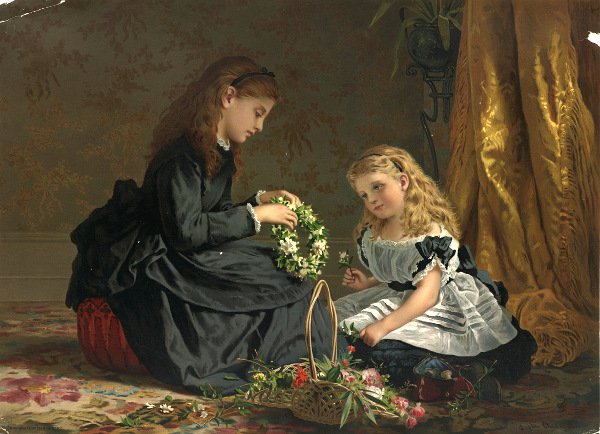
In Victorian days ladies were not expected to have careers but with Walter Anderson’s support Sophie Anderson managed to do just that and, furthermore, was very successful. So I return to my original question about her art – love it or hate it?

I am so happy to have discovered your site which I discovered while looking for some information on Claude Monet. This entry on Sophie Gengembre Anderson was informative as it is a genre that is not usually of interest to me. Her paintings are exquisite and since women painters were usually relegated to subjects such as children, she pursued the avenue open to her and excelled. Thank you for this interesting post and I look forward to future entries.
Hello, I am the owner of the picture ” girl with pomegranates ” whose photo put. If you are a collector or amateur of this artist,this picture is for sale to Drouot Paris on June 22nd, 2018 in a small price seen the size and the quality of the work. It was realized in Capri in 1886. Cordially.
Bonjour, je suis le propriétaire du tableau “jeune fille aux grenades” dont vous avez mis la photo. Si vous êtes collectionneur ou amateur de cette artiste il est à vendre à Drouot Paris le 22 juin 2018 à un petit prix vu le format et la qualité de l’oeuvre. Il a été réalisé à Capri en 1886. Cordialement.
Hello, I am the owner of the picture ” girl in pomegranates ” whose photo you put. If you are a collector or amateur of this artist il is for sale to Drouot Paris on June 22nd, 2018 in a small price seen the size and the quality of the work. It was realized in Capri in 1886. Cordially.
The “photo” or even if it’s a painting, of Sophie at the top of the article. How can it be her? The dress she’s wearing and the look would suggest early 1900’s, but by 1900, Sophie was 77. The woman in the image doesn’t look 77, more like early 30’s maybe. I’m confused. If the image of Sophie is a painting and the woman is in mid-30’s that would make the year of a painting late 1850’s. No woman looked or dressed like this in the mid 1850s. Is this photo of a daughter, maybe? I’m not trying to be difficult, the numbers just don’t add up. Ms. Max
I think you must be right!!!
Amazon sells a book about Sophie (the Zedign Art Series Book 100) using the same image supposedly of Sophie, and in color, no less. That just can’t be Sophie. Why is this photo being perpetuated as Sophie when the woman in the image is of a person photographed in the 1930’s, long after Sophie was dead and aged 80. https://www.amazon.com/Sophie-Gengembre-Anderson-Paintings-Drawings-ebook/dp/B07ZQB5ZL9
Yes good question…I wonder what’s going on anyways.